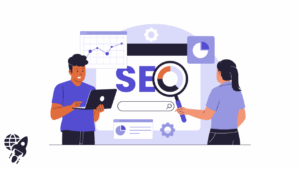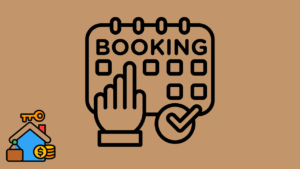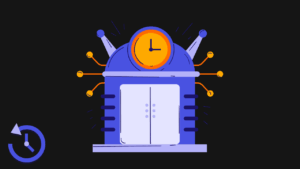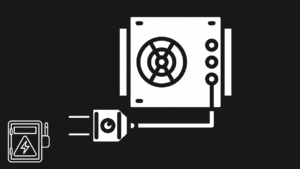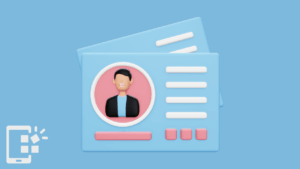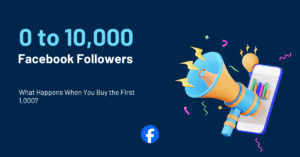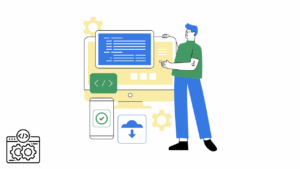Why KOLs Are Important in Sustainable Web3 Growth
Web3 has no shortage of spikes. A trending thread, a speculative token, a buzzy partnership—attention surges, numbers pop, dashboards glow. Then the curve falls back to earth. The problem isn’t reach; it’s resilience. Sustainable growth asks a different question: how do we turn attention into belief, belief into participation, and participation into contribution that outlasts market weather? In this article, we’ll explore and understand why KOLs (Key Opinion Leaders) are the missing piece in sustainable web3 growth.
Enter KOLs—Key Opinion Leaders. Not as temporary megaphones, but as trust routers and context translators who help communities understand what you’re building, why it matters, and how to participate responsibly. They’re the missing piece because sustainable growth is a credibility problem more than a coverage problem. Coverage you can buy. Credibility you must earn—and KOLs, when engaged correctly, help you earn it at scale.
Let’s examine why KOLs matter, how to architect a program that compounds instead of burns out, and the metrics that prove you’re building something durable.
Paid reach is abundant. Credible context is scarce.
In Web2, you could rent trust with ads. In Web3, the community is your media channel—and it has a long memory. Mercenary capital exits, airdrop farmers churn, and flashy sizzle reels age poorly. What persists is context:
- What problem do you truly solve?
- What trade-offs did you choose and why?
- Where’s the proof—on-chain, in docs, in shipped code?
KOLs sit at that junction. They transform a press release into a plain-English explainer, a feature into a use case, a roadmap into an understandable bet. When markets wobble, people don’t look for ad creative; they look for voices they trust. If those voices already understand your project deeply, they can stabilize narrative, redirect rumor, and channel energy productively.
KOLs aren’t “influencers.” They’re networked editors. Key Opinion Leaders
The old model: pay a creator to say your name. The new model: empower domain-credible KOLs to edit your message for their audience’s needs—devs, traders, creators, or governance delegates. The difference is night and day:
- Influencer broadcast: one-way, surface-level, short half-life.
- KOL editorial: two-way, nuance-rich, archived in threads, AMAs, and long-form posts that communities reference for months.
Sustainable programs look more like editorial partnerships than ad placements. You supply access, clarity, and receipts. They supply translation, interrogation, and continuity.
The sustainable growth flywheel (KOL-powered)
Think in loops, not launches:
- Attention → Understanding
KOL deep-dives, teardown threads, and live demos convert noise into clarity. - Understanding → Participation
Tutorials, office hours, and governance explainers lower the barrier to first action—install a client, stake, vote, build. - Participation → Contribution
Community spotlights, builder AMAs, and “decision diaries” encourage users to author PRs, write proposals, create tools. - Contribution → Advocacy
Contributors become micro-KOLs who echo your narrative with their own receipts. The loop accelerates with every credible voice.
Without KOLs, the loop stalls at “attention.” With them, it compounds.
Selecting KOLs (Key Opinion Leaders): fit beats follower count
Sustainable growth is about fit—domain, ethos, and audience. A simple rubric:
- Domain credibility: Do they ship, research, or moderate in your vertical (DeFi, infra, NFTs, dev tooling, DAO ops)?
- Evidence habit: Do they link audits, PRs, dashboards, or on-chain receipts?
- Disclosure discipline: Are incentives and conflicts stated plainly?
- Dialogue readiness: Do they host Q&A, accept critique, and update views?
- Audience match: Will their followers reasonably use what you build?
You want interpreters, not hype machines. Influence without relevance is expensive and brittle.
Incentives that don’t corrode trust
Comp is sensitive in Web3. The formula is simple: be generous, be clear, be boring.
- Comp structure: Blend fixed fees for editorial time with transparent performance goals (e.g., qualified dev signups, docs completions, governance participation). Avoid price talk.
- Non-financial rewards: Early feature access, research credits, co-authorship on technical posts, and visibility for their community initiatives.
- Guardrails: Public disclosure page; no exclusive takes that muzzle criticism; a “right to dissent” baked into the agreement.
If a partnership cannot survive disclosure, it doesn’t deserve to exist.
Enablement: give KOLs (Key Opinion Leaders) something real to show
Authenticity is a practice, not a vibe. Equip KOLs with receipts:
- Sandbox access: Stage environments, test funds, and reproducible scripts so they can demonstrate flows live.
- Changelogs & decision notes: Human-readable “why we shipped this now” summaries beat vague bullet points.
- Roadmap with risk bands: Near/mid/long scopes with confidence levels and dependencies.
- Incident postmortems: If something breaks, publish the five-part memo (what happened, impact, root cause, mitigation, prevention). KOLs can amplify it because you owned it.
When you hand people proof, they don’t need to embellish.
Content architecture that compounds
Sustainable KOL programs orchestrate formats with roles:
- Deep-dive essays to anchor a narrative (canonical references that forums link for months).
- Live AMAs / office hours to surface questions and defuse rumor cycles.
- Screenshare demos to move users from “I get it” to “I did it.”
- Postmortems / retros to model maturity and reduce fear during volatility.
- Community spotlights to elevate credible micro-voices and diversify distribution.
Stagger these formats across a quarter. Make each piece point to the next, and you’ve built a serial—audiences return to see what chapter dropped.
Measurement: signals that predict durability
Vanity metrics spike; durable signals accumulate. Track both leading and lagging indicators:
Leading (weekly):
- KOL echo strength: Second-order summaries by unaffiliated accounts.
- Question quality: Shift from “wen?” to trade-off inquiries and implementation nuances.
- Proof velocity: Time between claim and public receipts (docs, PRs, dashboards).
- Activation lift: % of viewers who complete a tutorial step or governance action within seven days.
Lagging (monthly/quarterly):
- Contributor conversion: New PRs, issues triaged, governance comments.
- Retention of attention: Return rate to docs, AMAs, tool repos.
- Share of credible voice: Portion of neutral/positive mentions that include evidence.
- Cost of credibility: Spend per retained contributor or per recurring governance participant.
If your leading indicators rise, the lagging ones almost always follow.
Common failure modes (and how to avoid them)
- Spray-and-pray placements: Fifty shoutouts in a week, none with substance. Fix: fewer partners, deeper work.
- Price-centric messaging: If your story collapses without a chart, you don’t have a story. Fix: anchor to utility, ergonomics, or economics users can feel.
- Opaque incentives: Hidden payments poison the well. Fix: disclose by default; invite third-party questions.
- Template content: Recycled scripts erode trust. Fix: co-create new angles grounded in your real roadmap and changelog.
- Silence in incidents: The vacuum gets filled by guesswork. Fix: 24-hour acknowledgement, single source of truth, scheduled updates.
Sustainable programs treat trust as a balance sheet entry, not a mood.
A 30-60-90 day plan to stand up a KOL system
Firstly, Days 1–30: Foundation of Key Opinion Leaders
- Map your thesis (what you believe about the market) and arcs (3 storylines you’ll develop this quarter).
- Build a KOL matrix by domain and audience; vet for track record and disclosure discipline.
- Ship a trust starter kit: public changelog, roadmap with risk bands, “decision diaries,” and a simple proof library.
Secondly, Days 31–60: First loops
- Co-produce one canonical deep-dive and one screenshare demo with two KOLs from different domains.
- Host a live AMA with pre-submitted questions; publish a written TL;DR within 24 hours.
- Stand up weekly proof cadence: every claim pairs with a link or screenshot.
Finally, days 61–90: Scale and stabilize
- Add two formats (community spotlight, postmortem write-ups).
- Measure leading indicators; prune low-signal channels.
- Publish a disclosure page with current partnerships and objectives.
- Reward emerging micro-KOLs who produce accurate, helpful content without prompting.
By the end of 90 days, you should feel fewer rumor fires, higher-quality inbound questions, and a growing bench of credible voices that aren’t on your payroll.
Where specialists help
KOL orchestration is part editorial, part community ops, part compliance. If you want to compress the learning curve, partner with a team that lives at this intersection. Agencies like Solus Agency can help design disclosure-first programs, craft proof-rich narratives, and align KOL output with product milestones—so the story and the ship cadence reinforce each other.
The quiet edge of sustainability
Sustainable growth doesn’t scream. It explains. So, It shows. It repeats calmly. Over time, that calm compounds into cultural memory: the sense that your project behaves like an adult, even when the market doesn’t. KOLs are the carriers of that memory. They hold the room when volatility shakes hands.
The missing piece wasn’t reach. It was who held the microphone when reach arrived, and whether the message had receipts. Put KOLs at the center of your growth loop—not as billboards, but as editors and stewards—and the spikes stop feeling like accidents. They become chapters in a longer, sturdier story.

